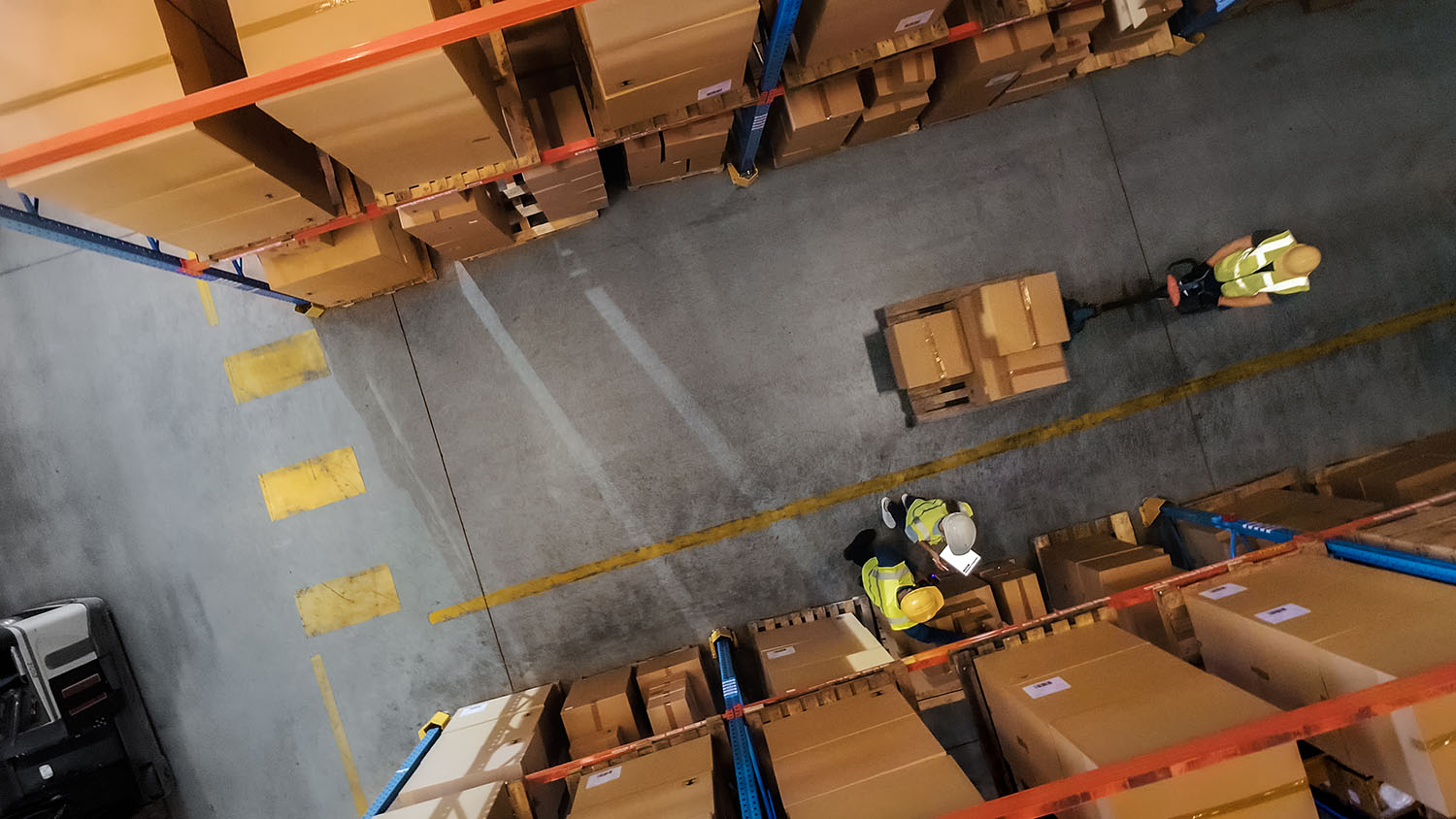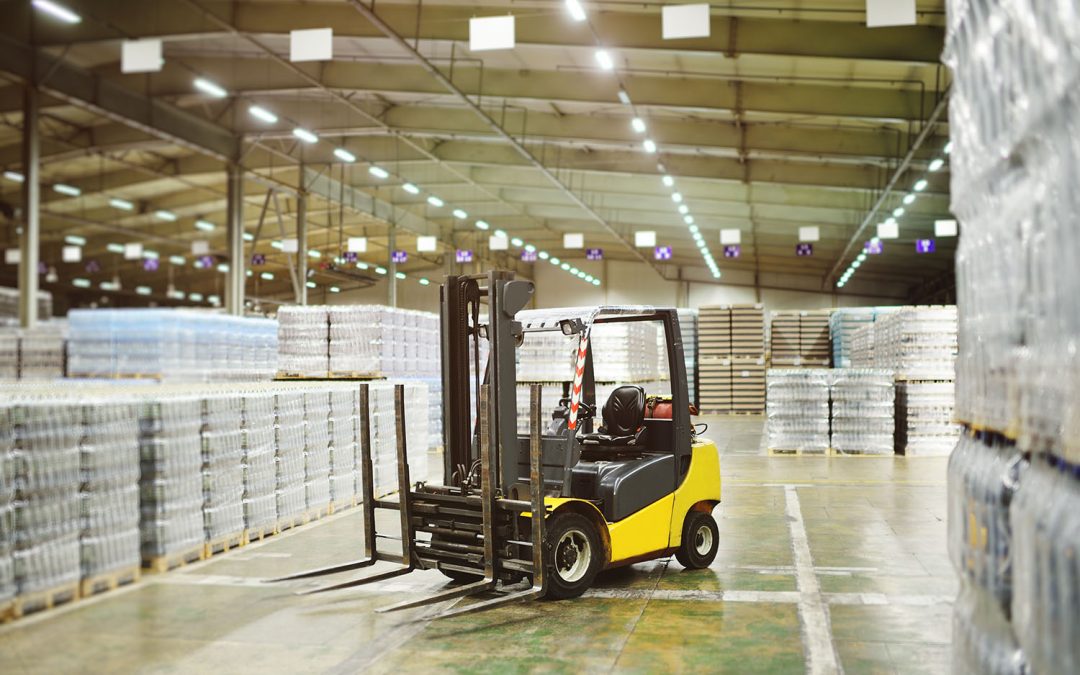Third-party logistics (3PL) has become a cornerstone of modern supply chains, allowing companies to delegate complex logistics functions to specialized providers.
And over the past few decades, the software powering 3PL operations has undergone a dramatic transformation, evolving from manual processes to today’s AI-driven, integrated platforms.
Understanding this evolution is key for any business looking to stay competitive in an increasingly complex logistics landscape.
Early Days of Third-Party Logistics Software
In the early days, third-party logistics was almost entirely manual. Warehouses operated with clipboards, spreadsheets, and paper-based inventory logs. Every task, from picking and packing to shipment tracking, required human effort, creating bottlenecks and increasing the risk of error.
And manual processes made supply chains vulnerable.
According to a study by VDC Research, human error is responsible for nearly 23% of all supply chain disruptions.
Early third-party logistics software systems were essentially digital versions of these manual processes.
They provided basic functionalities like inventory management, order entry, and billing, but a little more. Integration was rare, automation was minimal, and scalability was a major challenge.
For example, many warehouses in the 1980s used MS-DOS-based inventory programs that couldn’t communicate with transportation management or customer service systems. Every department operated in a silo, making real-time visibility almost impossible.
The growing demands of globalization and e-commerce soon exposed the cracks in these systems, setting the stage for major innovation.
Key Technological Milestones in Third-Party Logistics Software Evolution
As logistics needs intensified, technology rapidly stepped in to fill the gaps.
1. The Barcode Breakthrough
Automation was one of the first breakthroughs.
Barcode scanning technology, introduced commercially in the 1970s and widely adopted by the 1990s, allowed warehouses to track goods faster and with fewer mistakes.
Studies highlight that barcode systems significantly improve inventory accuracy and operational efficiency.
2. Real-Time Coordination with the Internet
The next leap came with internet connectivity.
For the first time, real-time data sharing across locations became possible.
Warehouses could instantly coordinate with transportation providers, retailers, and manufacturers, boosting supply chain responsiveness and raising expectations for visibility.
3. The Cloud Revolution
By the early 2010s, 3PL leaders like DHL and XPO Logistics began migrating to cloud-based WMS and TMS platforms.
The benefits were clear: faster deployment, stronger agility, and greater resilience against disruptions.
Cloud systems also made advanced logistics software accessible to smaller and mid-sized 3PLs, not just the global giants.
These milestones didn’t just streamline operations; they completely reshaped what businesses expect from their logistics partners.
Features of Modern 3PL Systems
Today’s third-party logistics software is a world away from the manual processes and basic automation of the past.
And modern platforms aren’t just handling inventory and shipping anymore, they’re running entire logistics ecosystems with real-time visibility, smart automation, and deep integration across operations.
Here’s what defines the best 3PL systems today:
1. Real-Time Inventory and Shipment Tracking
Companies today demand visibility into every step of their supply chain.
Modern 3PL software like Da Vinci WMS offers real-time dashboards that monitor inventory levels, shipment progress, and warehouse operations across multiple locations, helping businesses catch problems early, optimize routes, and deliver faster.
2. Seamless Integration Across the Supply Chain
Modern 3PL systems don’t operate in silos. They connect with ERP systems, CRM platforms, order management tools, carrier networks, and customer service portals, creating a unified and automated flow of information from order to delivery.
An online purchase can now automatically trigger picking, shipping, and invoicing, without human bottlenecks slowing it down.
3. AI-Driven Predictive Analytics
It’s not enough to react to disruptions anymore. Businesses need to predict and prevent them.
Advanced 3PL platforms are embedding machine learning algorithms that forecast demand, optimize warehouse layouts, recommend proactive shipment adjustments, and even automate reordering decisions.
This shift toward predictive logistics helps 3PL providers stay ahead of market changes and customer expectations.
4. Flexibility and Scalability
Markets are moving faster than ever. Modern 3PL systems are built to scale up or down without needing costly new infrastructure.
Whether it’s handling seasonal spikes, expanding into new regions, or onboarding new clients, businesses need a logistics platform that grows with them, not one that holds them back.
5. Customer-Centric Logistics
Today’s customers expect fast shipping, real-time tracking, and proactive communication.
Modern 3PL software supports these expectations by offering branded tracking portals, automated status updates, flexible delivery options, and even self-service support.
The result is a more substantial customer experience that drives loyalty and repeat business.
And it’s not just about operational efficiency anymore.
It’s about using logistics as a “competitive advantage” that turns supply chain performance into a true market differentiator.
Future Trends Shaping Third-party Logistics Software
The next evolution of 3PL software is already underway, and it’s being shaped by technologies that promise even greater efficiency, intelligence, and resilience.
1. Artificial Intelligence and Machine Learning
AI and machine learning are moving beyond analytics into active decision-making.
Modern 3PL systems are starting to use AI to automate complex tasks, such as dynamic route planning, real-time inventory optimization, and predictive maintenance scheduling.
As these technologies mature, they could eventually power fully autonomous logistics ecosystems, minimizing human intervention and maximizing speed and efficiency.
2. Internet of Things (IoT) Integration
IoT is making the physical supply chain more visible than ever.
Smart sensors placed on pallets, containers, and delivery vehicles provide live data on location, temperature, humidity, and handling conditions.
For 3PL providers, this means more precise tracking, faster response times, and better protection against risks like spoilage, theft, or delays.
3. Robotic Process Automation (RPA)
Many administrative tasks, such as billing, order processing, and compliance reporting, are still handled manually in 3PL operations today.
RPA technology is starting to automate these repetitive processes, freeing up human teams to focus on strategic logistics planning and customer service.
As automation expands, 3PL providers that embrace RPA will likely operate faster, with lower overhead and fewer errors.
4. Sustainability and Green Logistics
Sustainability is fast becoming a competitive necessity. Shippers and end customers alike are prioritizing environmentally responsible logistics.
Future-ready 3PL systems will integrate carbon tracking, eco-optimized routing, and tools for reporting on sustainability metrics as standard features.
5. Hyper-Personalization of Logistics Services
As customer expectations rise, personalization is extending into logistics.
Instead of one-size-fits-all shipping and fulfillment models, businesses increasingly expect logistics partners to offer tailored solutions: flexible delivery options, customized inventory handling, and real-time visibility into personalized key performance indicators (KPIs).
And all these 3PL trends point to one thing: The future of 3PL software isn’t just about managing operations, it’s about driving smarter, faster, and more customer-centric logistics strategies.
Why Flexible 3PL Solutions Matter for the Future
Speed, complexity, and unpredictability are now the constants in global supply chains.
And flexibility is quickly becoming the most important advantage a 3PL provider can offer.
Markets can shift overnight. Customer demands can surge without warning. New compliance rules can appear across different regions.
Businesses need logistics partners and systems that can pivot just as fast.
1. The Cost of Inflexibility
When a logistics operation is rigid, it struggles to adjust to disruptions.
Supply shortages, transportation delays, seasonal spikes, and geopolitical shifts all hit harder when processes and systems can’t scale, reroute, or adapt on demand.
And the consequences aren’t minor; missed deliveries, lost customers, and rising operational costs can all snowball from even small inflexibilities.
2. Why Modern 3PL Systems Must Be Built for Change
Modern 3PL platforms are designed to give businesses the critical agility they need. Cloud-based infrastructure allows for rapid scaling without significant capital investment. Real-time data dashboards enable decision-makers to identify issues early and take action quickly. AI-driven analytics help predict demand swings and recommend proactive adjustments.
And integrations across ERP, CRM, and carrier networks mean that when one part of the supply chain shifts, the rest can respond automatically, without manual intervention slowing everything down.
3. Flexibility Isn’t Just About Technology, It’s About Strategy
The most future-ready 3PL providers don’t just invest in flexible systems. They build flexible operating models: multi-carrier shipping strategies, warehouse network optimization, and customizable service offerings for different industries.
This strategic flexibility enables businesses to not only survive disruption but actually turn volatility into a competitive advantage.
4. Choosing a Future-Proof 3PL Platform
Platforms like Da Vinci WMS are built with this philosophy in mind, offering scalability, real-time control, and deep integration options that evolve as the market demands shift.
Choosing a flexible, future-proof system today means setting your business up to thrive tomorrow, regardless of the challenges the future brings.
The Journey of Third-party Logistics Software Innovation
The evolution of third-party logistics software has been nothing short of transformative.
And every major leap, from basic automation to cloud integration to AI-driven intelligence, has reshaped what businesses can expect from their logistics partners.
What started as manual, paper-based systems has evolved into dynamic platforms capable of managing complex, global supply chains with precision and speed.
But the pace of change isn’t slowing down.
The rise of AI, IoT, robotic process automation, and sustainability requirements is already redefining what it means to be a competitive 3PL provider.
Businesses that want to stay ahead need logistics solutions that are flexible, scalable, and built to adapt as quickly as the market does.
Choosing the right platform is about more than solving today’s challenges. It’s about preparing for tomorrow’s opportunities.
With advanced capabilities like real-time tracking, predictive analytics, and seamless integrations, solutions like Da Vinci WMS help businesses turn their logistics operations into a true driver of growth.
Ready to elevate your 3PL operations? Request a demo of Da Vinci WMS and see how a future-ready platform can transform the way you manage, optimize, and scale your supply chain.



